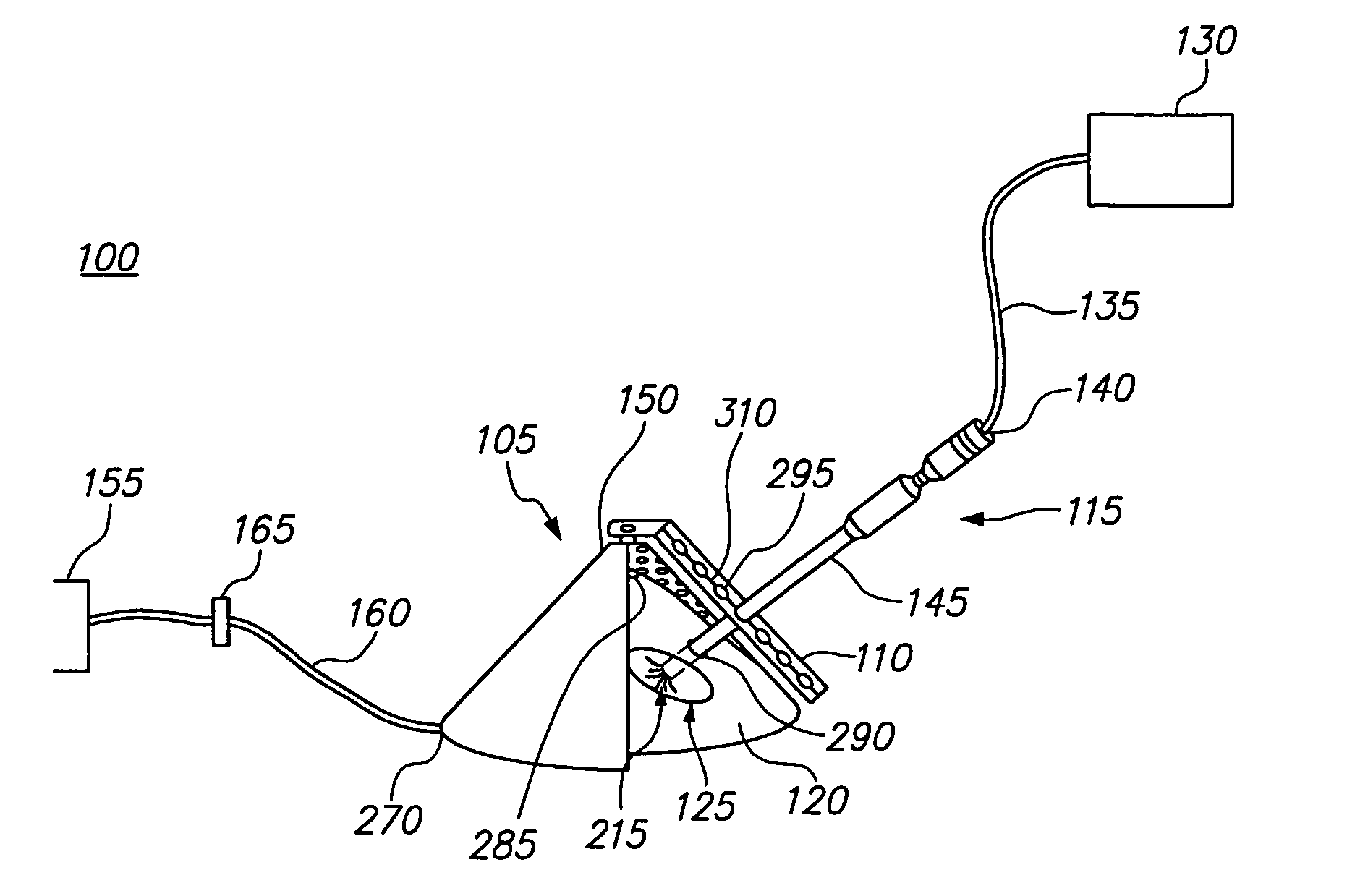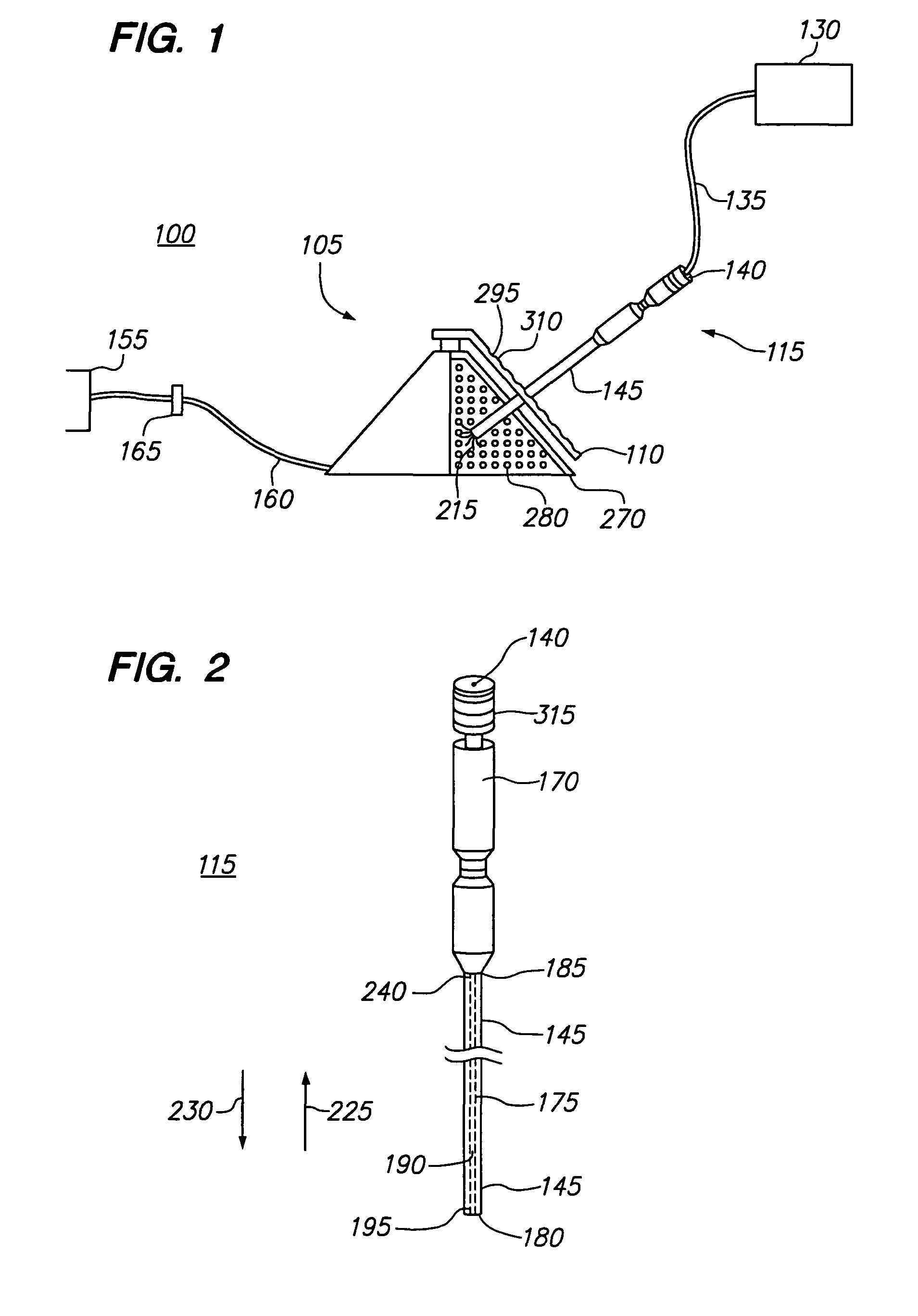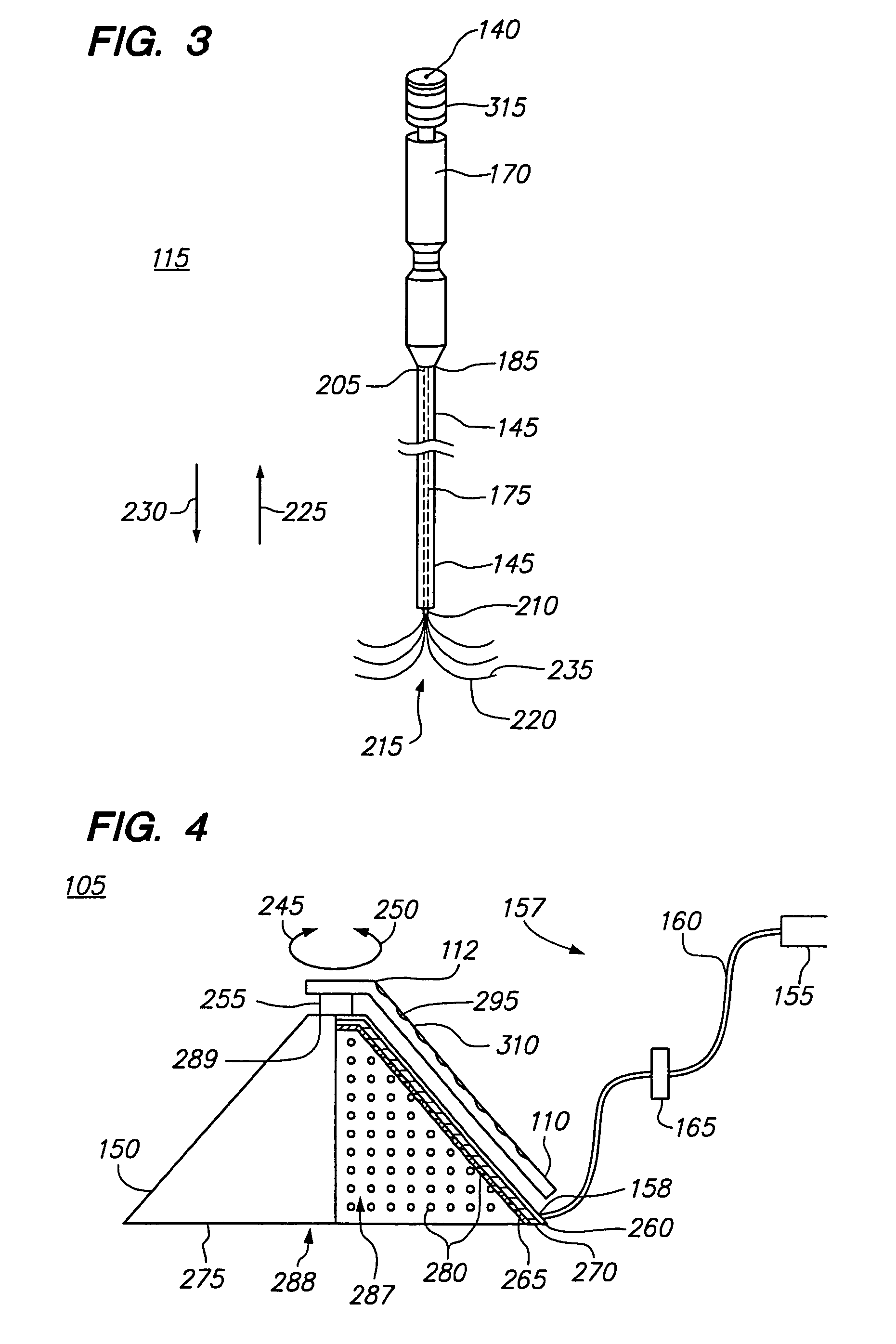Method and assembly for breast immobilization
a breast and immobilization technology, applied in the field of breast immobilization, can solve the problems of breast tissue pliability, abnormal movement of breast tissue during treatment, and breast tissue naturally shifting,
- Summary
- Abstract
- Description
- Claims
- Application Information
AI Technical Summary
Benefits of technology
Problems solved by technology
Method used
Image
Examples
Embodiment Construction
[0061]FIG. 1 illustrates a breast tissue ablation system 100 constructed in accordance with a preferred embodiment of the present invention. The ablation system 100 generally comprises an ablation probe assembly 115, configured for introduction into a breast of a patient to ablate target tissue, such as a tumor, a radio frequency (RF) generator 130 configured for supplying RF energy to the probe assembly 115 in a controlled manner, and a vacuum operated breast immobilization assembly 105 configured to lift the breast away from the patient's body and stabilize it relative to an associated medical device holder 110.
[0062]Referring specifically to FIGS. 2 and 3, the probe assembly 115 generally comprises a handle assembly 170, an elongated cannula 145, and an inner probe 175 slideably disposed within the cannula 145. The handle assembly 170 is mounted to the cannula 145. As will be described in further detail below, the cannula 145 serves to deliver the active portion of the inner prob...
PUM
 Login to View More
Login to View More Abstract
Description
Claims
Application Information
 Login to View More
Login to View More - R&D
- Intellectual Property
- Life Sciences
- Materials
- Tech Scout
- Unparalleled Data Quality
- Higher Quality Content
- 60% Fewer Hallucinations
Browse by: Latest US Patents, China's latest patents, Technical Efficacy Thesaurus, Application Domain, Technology Topic, Popular Technical Reports.
© 2025 PatSnap. All rights reserved.Legal|Privacy policy|Modern Slavery Act Transparency Statement|Sitemap|About US| Contact US: help@patsnap.com



